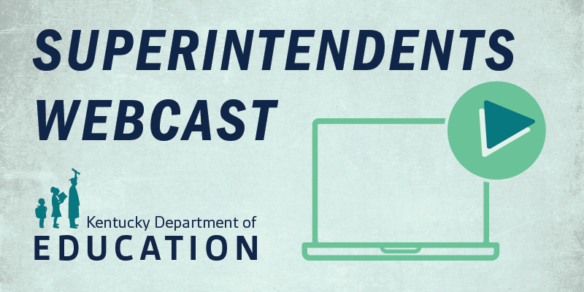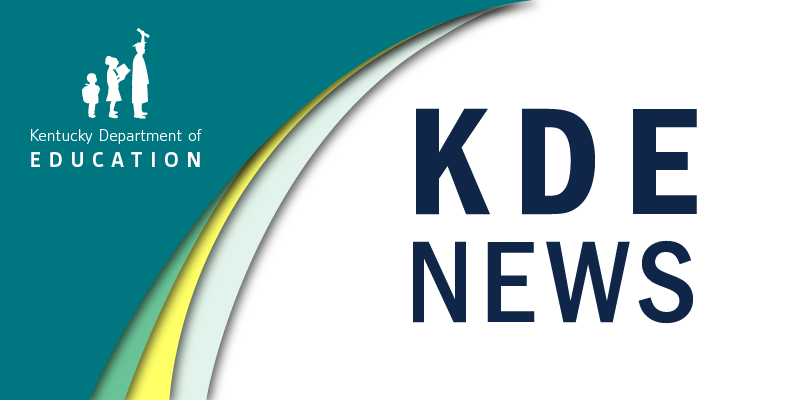
Officials with the Kentucky Department of Education (KDE) provided an update on high-quality instructional resources, accountability cut scores and the Kentucky School Report Card release dates during the Superintendents Webcast on Oct. 17.
Jennifer Stafford, division director in KDE’s Office of Assessment and Accountability, said data from the 2022-2023 Kentucky School Report Card will be released to the public at 10 p.m. ET on Oct. 31. The data will be released under embargo on Oct. 30 to school district officials and members of the working press who request the information.
KDE Associate Commissioner Rhonda Sims in the Office of Assessment and Accountability discussed Kentucky’s Accountability System, which is set forth in KRS 158.6455. It includes an exclusive list of accountability indicators based on status scores – representing the current year – and change scores, which represent the difference between the prior year and current year. This will be the first year that change will be included in the Kentucky School Report Card.
“It really passed in legislation of February 2020, literally right before we went into COVID shutdown,” Sims said. “It has taken us until this time in 2023 to fully get the system implemented.”
The accountability system includes:
- State assessment results in reading and mathematics;
- State assessment results in science, social studies and writing (on-demand and editing/mechanics);
- Progress on English language proficiency;
- Results from the Quality of School Climate and Safety Survey; and
- Postsecondary readiness and graduation rate (high school only).
The overall performance rating combines all available indicators, and the indicator scores are calculated by combining the status score and the change score. Each indicator score is weighted, and the weighted indicator scores are added together to produce an overall score.
“We brought together 29 stakeholders with an accountability standard-setting panel and they looked at the cut scores and recommended cut scores along that progression,” said Stafford. “They thought about what it means to be at each of those performance levels, so they looked at it and recommended cut scores that would change the different levels from one level to the next.”
The state Accountability Standard Setting Committee unanimously recommended status, change and overall cut scores to KDE and the Local Superintendents Advisory Council (LSAC). The LSAC and Interim Education Commissioner Robin Kinney approved the cut scores based on the recommendations on Oct. 10.
High-Quality Instructional Resources
KDE Chief Academic Officer Micki Ray spoke about Senate Bill 156 (2023), which amended KRS 158.305 relating to the adoption of high-quality instructional resources (HQIRs) for K-3 reading.
The law establishes that by July 1, 2024, “each superintendent shall adopt a common comprehensive reading program that is determined by the department to be reliable, valid and aligned to reading and writing standards required by KRS 158.6453 and outlined in administrative regulation promulgated by the Kentucky Board of Education for kindergarten through grade three (3) for all schools or a subset of schools, with the consultation of all affected elementary school councils.”
Ray said “that may seem like you have plenty of time to make that evaluation and selection of the resource,” but “just from our pilot participant experiences, I want to mention that February would be a good target deadline for having made the evaluation and selection of your specific resource. March at the absolute latest. This will give adequate time for the instructional resources to be delivered to the local district and for teachers to participate in launch professional learning in late spring and summer before the start of the 2024-25 academic year.”
Ray said the Reading and Writing Instructional Resources Consumer Guide defines high-quality instructional resources (HQIRs) and assists districts in the evaluation and selection of a primary Tier 1 comprehensive reading program.
A high-quality instructional resource is aligned with the Kentucky Academic Standards and an actionable foundation for improving the way students experience learning. Ray said there are aligned HQIRs that meet the unique needs of students, educators and local communities.
“We know that not one resource can possibly do all of the things,” said Ray. “So, we are encouraging you to consider both an explicit systematic, cumulative and multisensory reading foundational skills supplement as well as a rich, knowledge-building curriculum”
School-Based Mental Health Professional Use of Time Survey
Leslie McKinney, a strategic data analyst in KDE’s Office of the Commissioner, updated superintendents on the school-based mental health professional use of time survey. Per KRS 158.416(3)(e), the local school district superintendent shall report to (KDE) no later than Nov. 1:
- The number of school-based mental health service providers;
- The position held;
- Placement in the district;
- Certification or licensure held;
- The source of funding for each position;
- A summary of the job duties and work undertaken by each school-based mental health service provider; and
- The approximate percentage of time devoted to each duty over the course of the year.
The link to the survey has been sent to superintendents.
The next Superintendents Webcast will be held on Nov 9.




Leave A Comment